#mesolithic europe
Text

The old and the youngling.
About 7000 years ago, an ageing man in his 60s was buried at Skateholm, Sweden. Next to him, face to face, lays a child of 4-5 years who was buried later. On the child's chest lay jewelry made of bear teeth and pieces of amber. A beautiful display of love, and that the two belonged together in life as in death.
Photo: Statens historiska museer.
#archaeology#archaeology mentions#upload#mesolithic#mesolithic europe#grave#Death#burial#scandinavian stone age#stone age
2K notes
·
View notes
Text
sitting up doing theoretical paleoarcheology where i fill in the huge gaps of worldbuilding about a group of fictional people and how they came to be from a book i read when i was 14 because the canon explanation is bullshit and i watch too much stefan milo and milo rossi
#and i inadvertently find ANOTHER place the author stole ideas from. this time its cultural appropriation though :/#learning about the mesolithic and the pre boreal and boreal epochs of europe tho pretty cool stuff#also holy fuck my mouth waters at the concept of dendochronology like AA you can just read tree rings like that? WOW
4 notes
·
View notes
Text
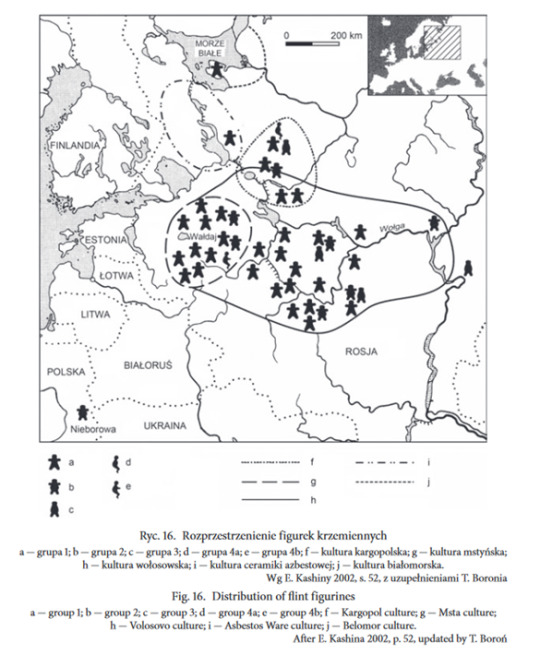
they kind of look like gingerbread men... gingerbread men distribution O.O
#magdalenian culture#paleolithic#epipaleolithic#mesolithic#prehistoric europe#prehistory#venus figurine#female figurine#my upl#archaeology
5 notes
·
View notes
Text
#archaeology#ucrania#prehistory#enviroment#landscapes archaeology#Est Europe#Archaeology of Europe#mesolithic#paleolithic#neolithic#Tripillia#Black Sea Archaeology#Crimea#Dniepper basin#prehistoric cultures#Ucranian Archaeology
1 note
·
View note
Photo

The reconstructed face of the “Cheddar Man” (c. 7,000 BCE) compared to his living descendant, Adrian Targett
The Cheddar Man is a Mesolithic skeleton that was recovered from England’s Cheddar Gorge in 1903. At around 9,000 years old, the Cheddar Man is the oldest complete skeleton ever discovered in the UK, and has long been hailed as the “first Briton.” DNA analysis on the Cheddar Man from 2018 indicated that he was lactose intolerant, had light-colored eyes, dark brown or black hair, and had a dark to black skin tone. Although the discovery of the Cheddar Man’s dark skin tone was surprising for both scientists and the public alike, it corresponds with recent research suggesting that genes linked to lighter skin only began to spread into Europe about 8,500 years ago - approximately 32,000 years later than what was previously believed.
In addition to the development on his skin tone, the Cheddar Man surprised scientists in 1997 when DNA analysis revealed that he had a living descendant - a retired history teacher named Adrian Targett. Targett and the Cheddar Man share the same mtDNA, which is inherited through the mother. In other words, they share a common maternal ancestor. What is even more remarkable is that Targett lives in Cheddar, only a half mile away from where his 9,000-year-old ancestor was discovered.
Targett was not invited to the initial reveal of his ancestor’s new facial reconstruction, but he has since seen it and has commented on the family resemblance. “I do feel a bit more multicultural now,” he once joked in an interview “And I can definitely see that there is a family resemblance. That nose is similar to mine. And we have both got those blue eyes.”
The development of the Cheddar Man’s skin tone has generated resistance, especially among far-right and white supremacist circles. Targett, however, is unbothered by it, stating that it is “marvelous what scientists can reconstruct once they sequence the DNA.” When asked if he thought whether the findings affected the way people think about race, Targett responded: “Yes, I do think it’s significant. Not many people in Cheddar mind it. But the lesson is that we’re all immigrants, whether you’ve been in a place for 10 minutes or 9,000 years. We’ve all come from somewhere.”
34K notes
·
View notes
Text


roasted some of those hazelnuts. Made me go hunt down that quote from that forest gardens of Europe blog post:
Hazel was the original Tree of Life for Mesolithic Europeans. The nuts are about 60% fat and 20% carbohydrates, and contain a wide range of proteins, vitamins and minerals - a few handfuls can cover most of a person’s daily energy needs. Its branches, tall and flexible but slender enough to cut with a flint axe, were used for tools and firewood. Mesolithic thatched huts were often made with hazelwood beams. From cradle to grave, the people of Mesolithic Europe relied on hazel more than any other single plant. Excavations of habitation sites from this period can turn up hundreds of thousands of roasted hazelnut shells. For over five thousand years, this single plant was the lifegiver to nearly all of Europe’s people.”
— Max Paschall, The Lost Forest Gardens of Europe
I can believe it! I've eaten like, half of these and they're filling. If you were a mesolithic hunter gatherer you could really get a lot done with this shit.
324 notes
·
View notes
Text
Seaweed isn't something that generally features today in European recipe books, even though it is widely eaten in Asia. But our team has discovered molecular evidence that shows this wasn't always the case. People in Europe ate seaweed and freshwater aquatic plants from the Stone Age right up until the Middle Ages before it disappeared from our plates.
Our evidence came from skeletal remains, namely the calculus (hardened dental plaque) that built up around the teeth of these people when they were alive. Many centuries later, this calculus still contains molecules that record the food that people ingested.
We analyzed the calculus from 74 skeletal remains from 28 archaeological sites across Europe. The sites span a period of several thousand years starting in the Mesolithic, when people hunted and gathered their food, through to the earliest farming societies (a stage called the Neolithic) all the way up to the Middle Ages.
Our results suggest that seaweed was a habitual part of the diet for the time periods we studied, and became a marginal food only relatively recently.
Continue Reading.
197 notes
·
View notes
Text
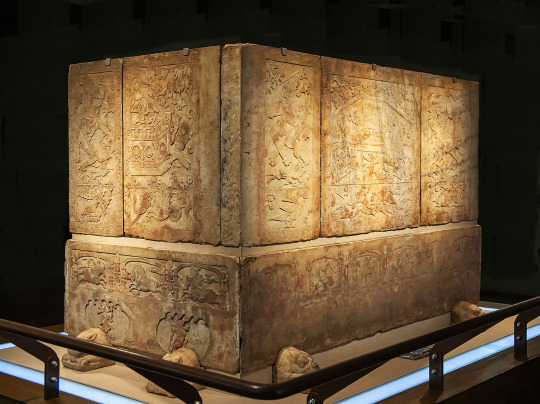

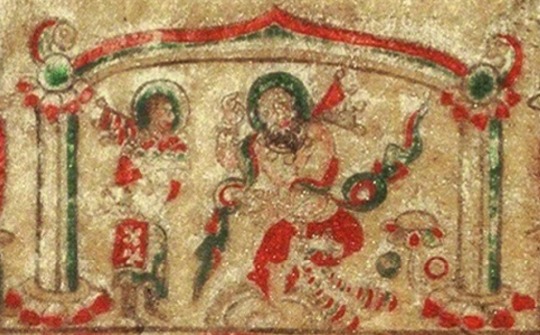

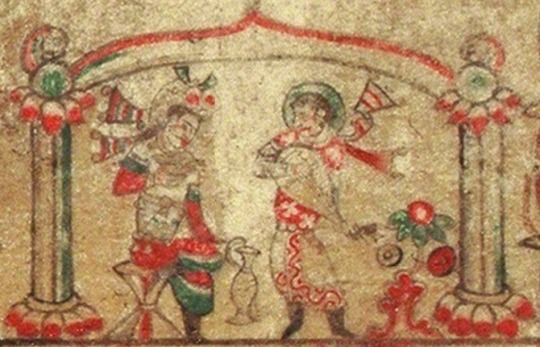




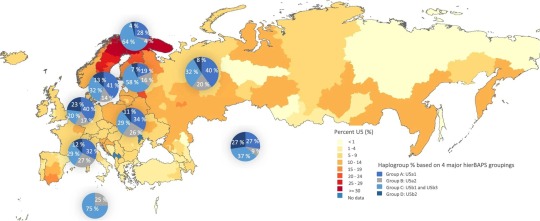
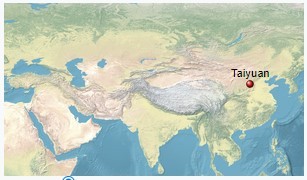
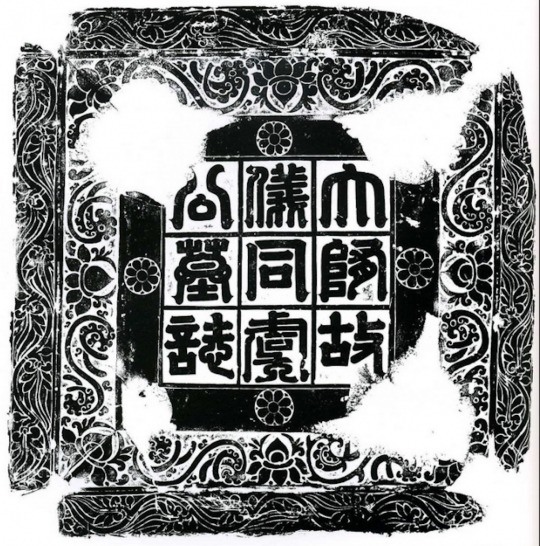
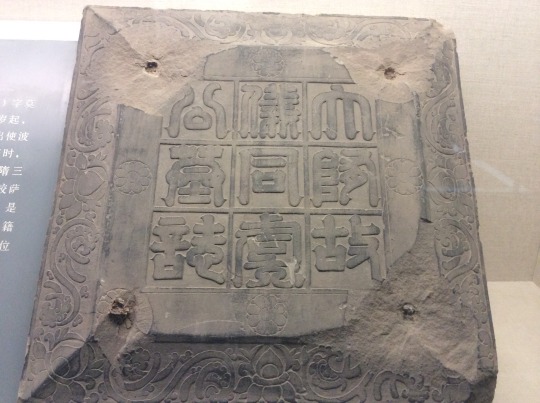

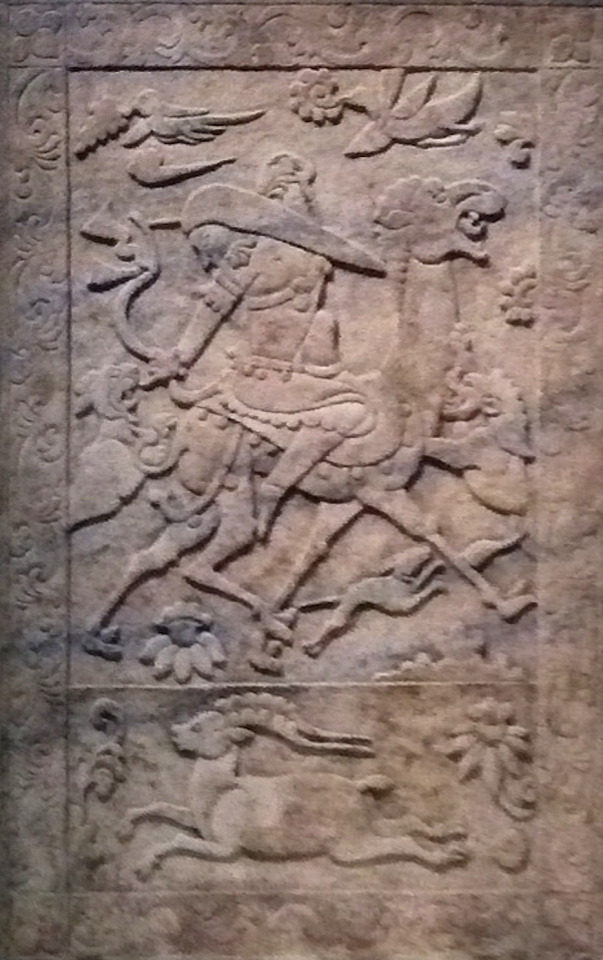
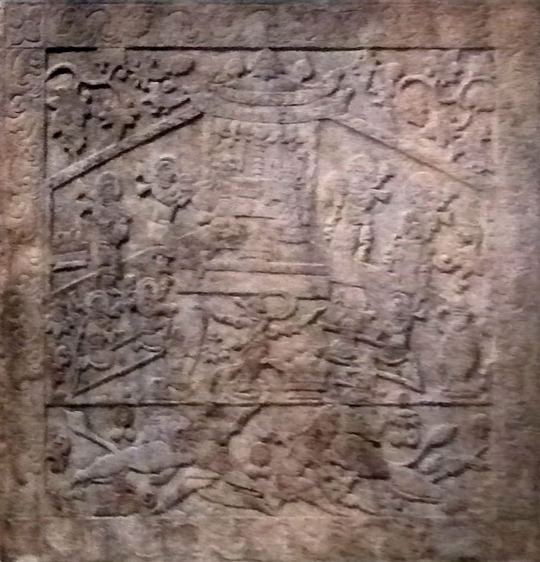
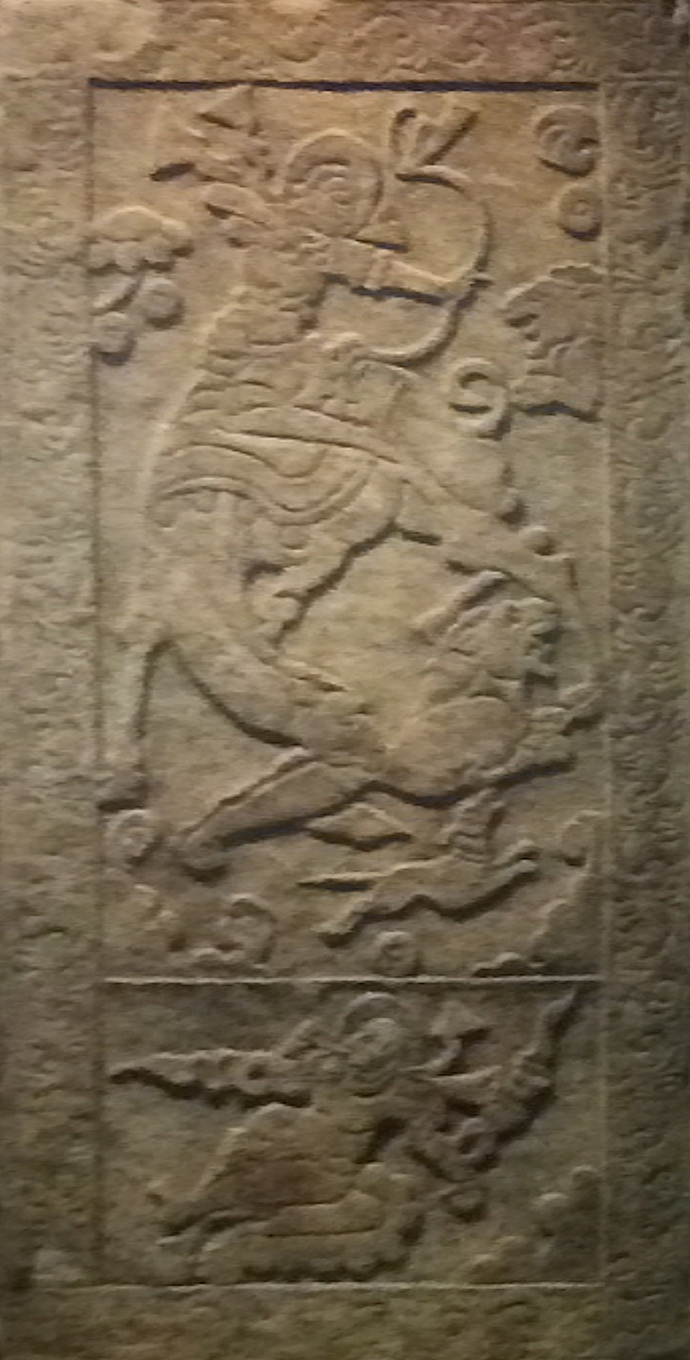
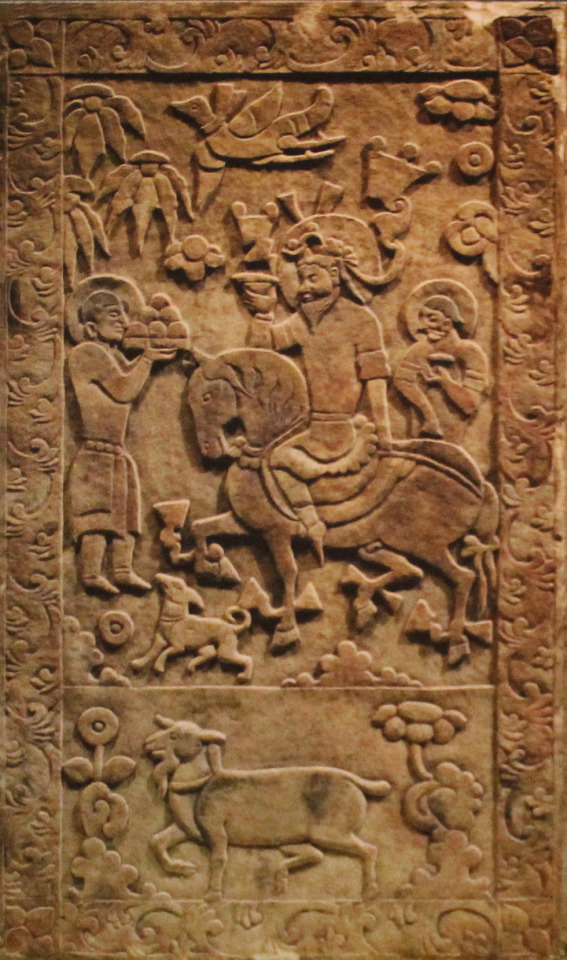
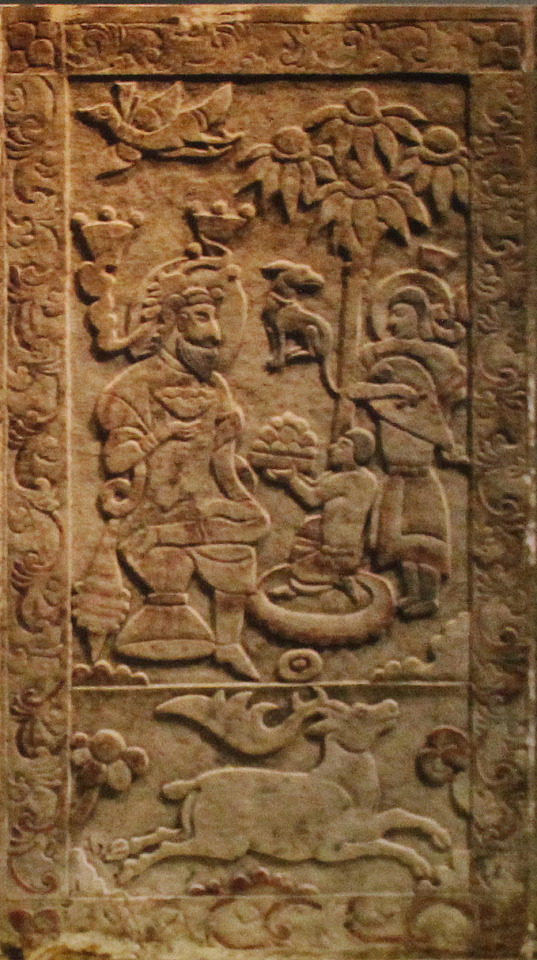
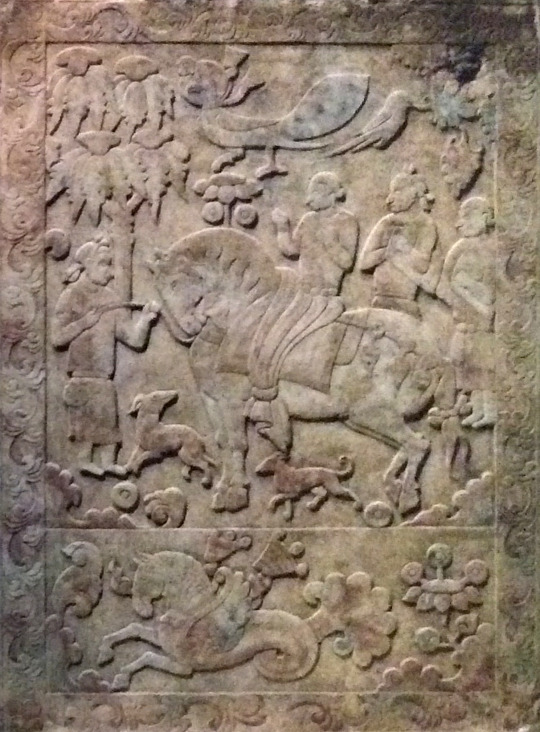
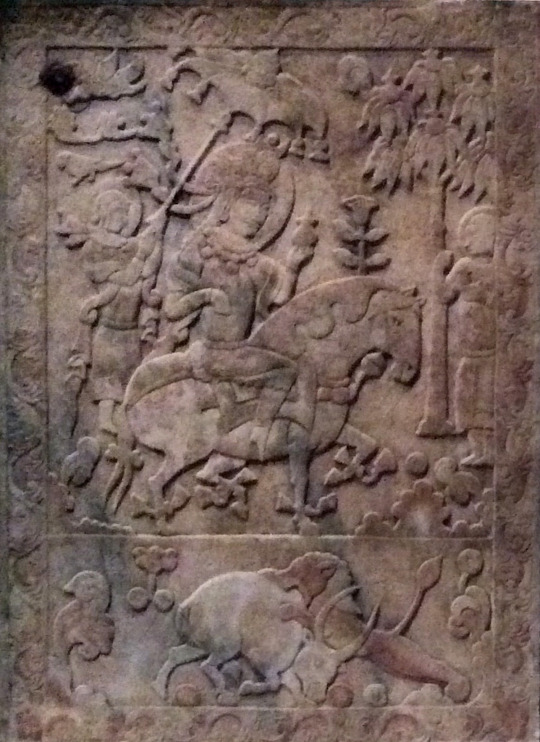
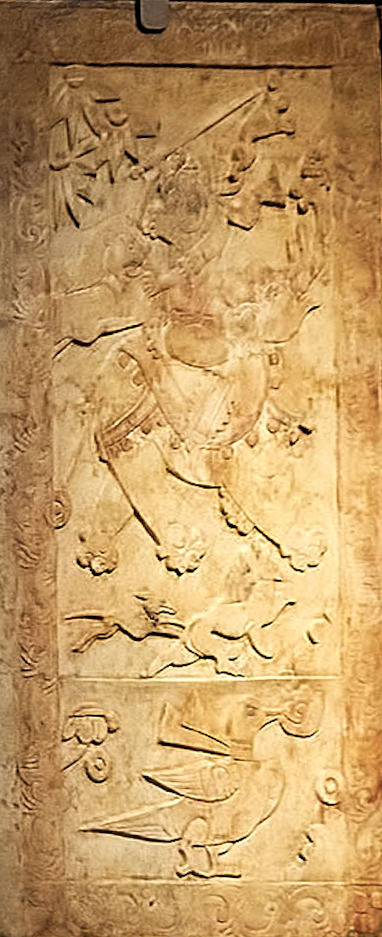
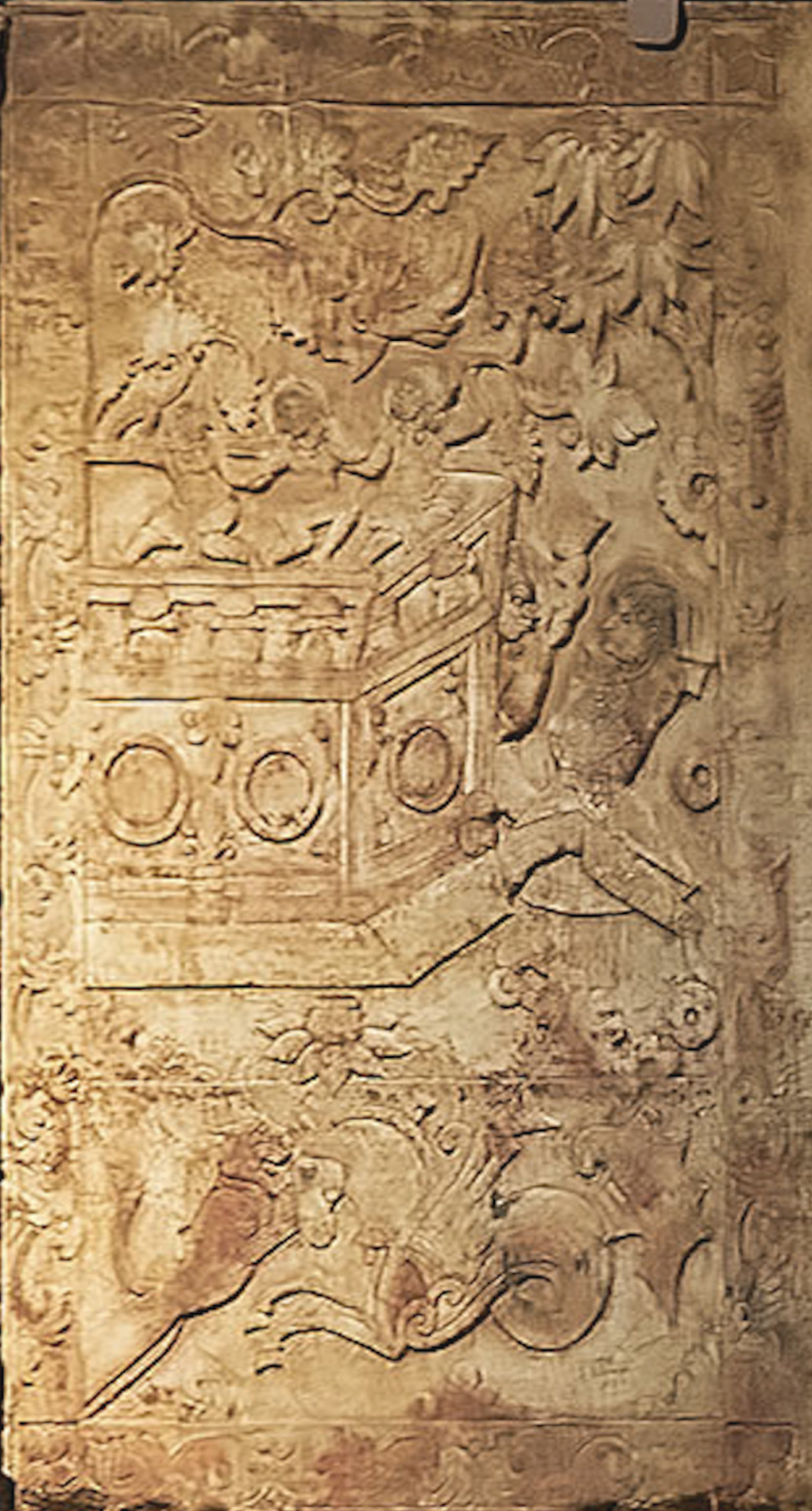

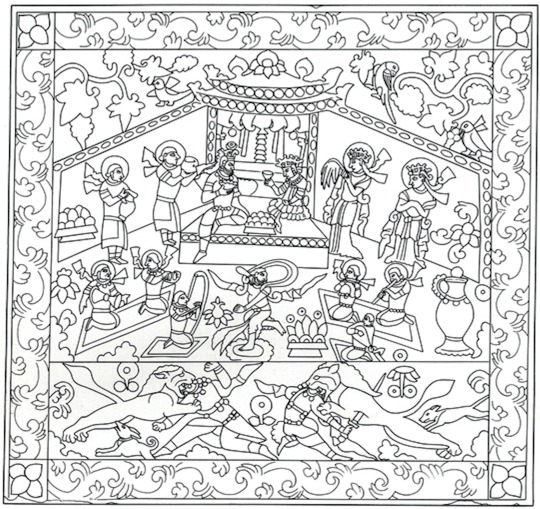
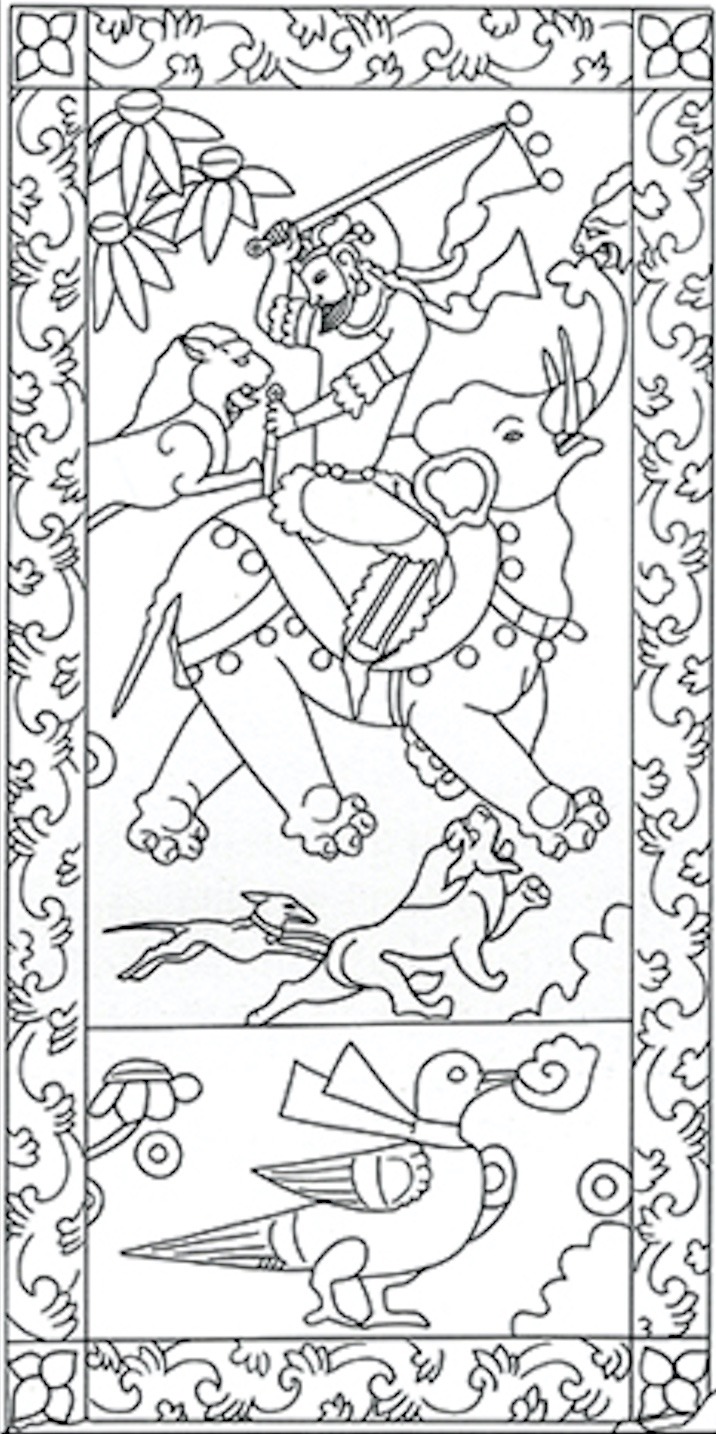
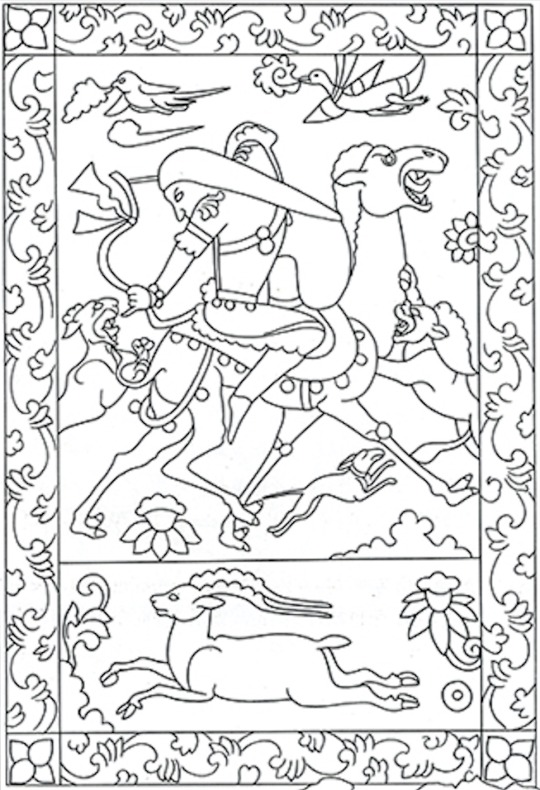



Tomb of Yu Hong 592-598 CE. Link to my blog at bottom with more sources and description of individual images.
This is probably a Sogdian tomb. Interestingly, the man has a haplogroup that was widespread amongst the blue-eyed Mesolithic/Neolithic Western Hunter Gatherers (WHG are probably where blue eyes originated from) and the haplogroup is found today most prominently in Sami, Finns, and Estonians. His wife has a haplogroup found prominently amongst East Asians. Based on her East Asian origins and the inclusion of some Turkic-looking people in the tomb's artwork I would assume she was probably a Turk, herself. The long-haired men without halos (e.g. panel 4) are probably Turks, that was a typical appearance for them during this time period. Men from other surrounding populations such as the Sogdians, Huns, Tocharians, etc. typically kept shorter hair that didn't go past their shoulders. More info:
"The man buried in the tomb went by Yu Hong (Chinese: 虞弘; pinyin: Yú Hóng; Wade–Giles: Yü Hung; 533–592 AD), with Mopan (莫潘) as his courtesy name, who was a Central Asian, probably of Persian or Sogdian origin, and practiced Zoroastrianism. He had settled in Early Middle Period China during the Northern Qi, Northern Zhou and Sui dynasties. This tomb is so far the only archaeological find in the Central Plains region that reflects Central Asian (Western Regions) culture. The epitaph found in the tomb records that he was a noble of the city of Yü-ho-lin / Yuhelin (尉紇驎) in the mysterious Yu country (魚國), assumably for which he is named, because the two characters 虞 and 魚 are homophones.
According to the epitaph, Yu Hong started his career in service of the nomadic tribe at the time, known as Ruru. At the age of 13, he was posted as an emissary to Persia by the Khagan of Ruru, as well as Parthia, Tuyuhun and Yuezhi. Later he went on a mission to the Northern Qi, Northern Zhou and Sui dynasties. He served as chien-chiao sa-pao fu / jianjiao sabao fu (檢校薩保府, lit. “acting director of the office of Zoroastrian affairs”, or “Sogdian affairs”) during the Northern Zhou period. The term sa-pao / sabao (薩保) comes from the Sogdian s′rtp′w, means a “caravan leader”.
He had later served as a provincial governor in the Sui dynasty government, a chieftain of the Central Asian people who had settled in China during that period. Yu Hong died at the age of 59 in 592 AD. His wife survived him by six years, and was buried in the same grave in 598 AD.
A study on ancient DNA reveals that Yu Hong belonged to the haplogroup U5, one of the oldest western Eurasian-specific haplogroups, while his wife can be classified as haplogroup G, the type prevalent in East Asia.
The age of U5 is estimated at between 25,000 and 35,000 years old, roughly corresponding to the Gravettian culture. Approximately 11% of Europeans (10% of European-Americans) have some variant of haplogroup U5.
U5 was the predominant mtDNA of mesolithic Western Hunter Gatherers (WHG) [this is where blue eyes probably originated from].
U5 has been found in human remains dating from the Mesolithic in England, Germany, Lithuania, Poland, Portugal, Russia, Sweden, France and Spain. Neolithic skeletons (~7,000 years old) that were excavated from the Avellaner cave in Catalonia, northeastern Spain included a specimen carrying haplogroup U5.
Haplogroup U5 and its subclades U5a and U5b today form the highest population concentrations in the far north, among Sami, Finns, and Estonians. However, it is spread widely at lower levels throughout Europe. This distribution, and the age of the haplogroup, indicate individuals belonging to this clade were part of the initial expansion tracking the retreat of ice sheets from Europe around 10,000 years ago.
U5 was the main haplogroup of mesolithic European hunter gatherers. U haplogroups were present at 83% in European hunter gatherers before influx of Middle Eastern farmer and steppe Indo-European ancestry decreased its frequency to less than 21%.
Today, haplogroup G is found at its highest frequency in indigenous populations of the lands surrounding the Sea of Okhotsk. It is an East Asian haplogroup. Haplogroup G is one of the most common mtDNA haplogroups among modern Ainu, Siberian, Mongol, Tibetan and Central and North Asian Turkic peoples people (as well as among people of the prehistoric Jōmon culture in Hokkaidō). It is also found at a lower frequency among many other populations of East Asia, Central Asia, Bangladesh, Sri Lanka, and Nepal. However, unlike other mitochondrial DNA haplogroups typical of populations of northeastern Asia, such as haplogroup A, haplogroup C, and haplogroup D, haplogroup G has not been found among indigenous peoples of the Americas."
-taken from Wikipedia
#sogdiana#indo european#ancient china#ancient history#antiquities#history#art#museums#sculpture#statue#ancient#turkic#eurasian#finnish#estonian#finno ugric#genetics
129 notes
·
View notes
Text


6,000-Year-Old Sandals Found in a Spanish Cave are Europe’s Oldest Shoes
New analysis has identified the oldest shoes ever discovered in Europe, according to a study published this week in the journal Science Advances.
The 22 woven sandals date from 6,000 years ago, radiocarbon analysis found in the study led by researchers at the Autonomous University of Barcelona and Alcalá University in Spain.
The ancient footwear, along with Mesolithic baskets and other tools, was first discovered back in 1857, when a cave in southern Spain was looted by miners. However, when the artifacts were first dated, in the 1970s, they were identified as being about 1,000 years more recent than this latest analysis found.
The very dry conditions within the cave were ideal for preserving perishable materials, the researchers said, and allowed the preservation of a prehistoric burial site complete with partially mummified corpses, accompanied by baskets, wooden tools, sandals and other goods.
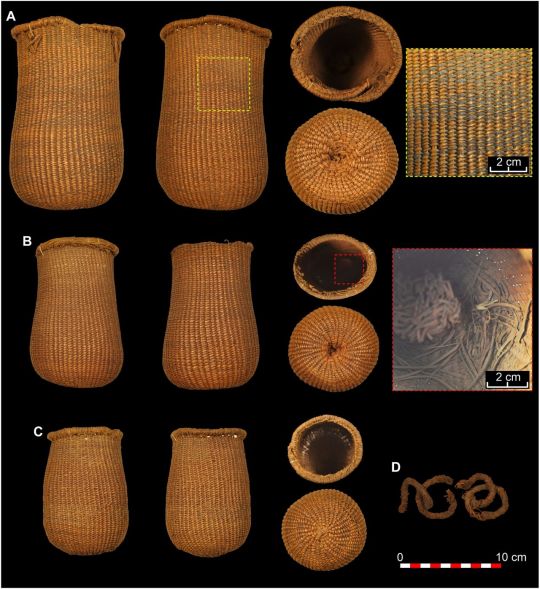

The objects are “the oldest and best-preserved set of plant fiber materials in southern Europe so far known,” María Herrero Otal, one of the study’s authors, said in a statement, adding that they demonstrate “the ability of prehistoric communities to master this type of craftsmanship.”
When Spanish archaeologist Manuel de Góngora y Martínez visited the cave in 1867, 10 years after the looting, he gathered the remaining artifacts, including the sandals, and gave them to museums in Madrid and Granada, where they have been studied by researchers, the study added.
The sandals were made of grasses as well as other materials, including leather, lime and ramie bast, a type of natural fiber.
Using the descriptions provided by Góngora, the study hypothesizes that the bodies were buried wearing the sandals.
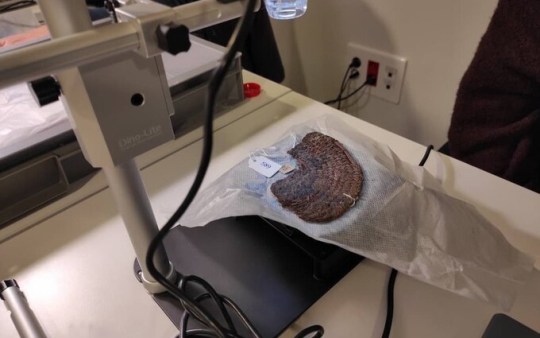
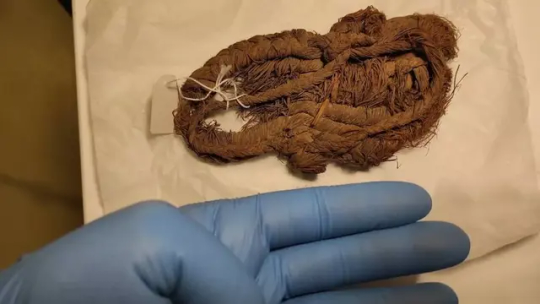
Some sandals had clear signs of wear, while others appeared never to have been worn, suggesting that some people had clothing made especially for their burial.
The researchers also studied several baskets and other wooden artifacts in the collection. These objects “open up groundbreaking perspectives on the complexity of Early-Middle Holocene populations in Europe,” they said, adding that most knowledge of past societies is drawn from durable artifacts rather than perishable ones such as baskets. The Holocene is the current geological epoch, which began 11,700 years ago.
Both the baskets and sandals suggest that the makers had an extended knowledge of the plant resources in the local environment as well as a high level of expertise, the researchers noted.
“The quality and technological complexity of the basketry makes us question the simplistic assumptions we have about human communities prior to the arrival of agriculture in southern Europe,” Francisco Martínez Sevilla, one of the study’s authors, said in a statement.
The study also found that the objects were deposited at the site at two very different times during the Early and Middle Holocene eras. The first phase was related to the Early Holocene hunter-gatherer populations, and the second phase to Middle Holocene farmers, researchers said.
By Issy Ronald.


#6000-Year-Old Sandals Found in a Spanish Cave are Europe’s Oldest Shoes#the oldest shoes ever discovered in Europe#Cueva de los Murciélagos#the Cave of the Bats#Andalusia Spain#ancient artifacts#archeology#archeolgst#history#history news#ancient history#ancient culture#ancient civilizations
128 notes
·
View notes
Note
Can you tell us more about who England refers too as mother? And did you divide the UK siblings roughly into two pairs because of Roman Britain? I'm sorry you just keep dropping hints and no one else has asked 💌
Oh lord, okay. So disclaimer, working with prehistory is a fucking crap shoot. Archaeology has a lot of interpretations and not as many facts as historians and archivists like me, especially who studied modern history, would like. And even when history does come to the islands in the form of the Roman writers, that is also largely questionable because propaganda is as old as human communication. So I try to work with what we do know, but before a certain point, I'm basically writing fantasy. But also, no one has to work with history ever in a fucking stupid anime fandom. I'm just a diagnosed anxious headcase who copes with the uncertainty of existence by researching the fuck out of every choice I've ever made sober, including this shitshow of a blog and predecessors. Most of my focus is on much later history, so I'm taking a minimalist approach here and making as little work for myself as possible while at least taking some guidance from history to fit the themes I like so none of this is likely going to be the best take, tbh. That said, onwards into the breach, I fucken guess.
Can you tell us more about who England refers to as mother?
Yes. So most of the time, the conglomerate characters of "Germania" or the fanon "Native America," where dozens and hundreds and thousands of politically interlocked or entirely separate cultures are smushed into one character, make zero sense to me. In the case of Native America, it's downright racist, and in the case of Germania it's basically sucking Tacitus off 2,000 years after the fact. But Brittania could make sense. Being an island separated from mainland Europe made for some attractive socio-political and cultural unity hinted at in writing after the Roman invasion and before the fact in the archaeological record. But how long before the Romans? Where do I begin with Brittania, eh? The Red Lady of Paviland? The Creswell Crags? The Starr Mesolithic Site? Neolithic Chambered Tomb-Shrines? Stonehenge? The Iron Age Hillforts? Ah! There we go, the Celtic arrival in Britain. i.e. the option that makes me do the least work to get the job done. The Celts arrive in Britain about 1,300-800 BCE and in Ireland about 800-500 BCE depending on who you read. There is one tribe among the Celtic that had strong links to Britain and Ireland. The Brigantes were stuck in the border region between what is today Scotland and England, with at least some sort of material connections in Wales and Ireland. So my shortcut to a decent storyline that had some basis in fact, was to have her people interpret her as their patron goddess of Brigantia and link her tightly to Celtic paganism and weakened by the invasions of Rome but also the widespread adoption of Christianity in the 5th century. She was a proud woman who enjoyed the worship she once knew and who loved her children fiercely. She was every bit a Cartimandua or Boudicca. And when Christ and his nails bled her to death, her sons eventually dug her a barrow at the foot of an iron age hillfort, and her only daughter braided her hair and placed her golden jewelry on her one last time and their world was never the same.
And did you divide the UK siblings roughly into two pairs because of Roman Britain?
Yes and no. The Romans did take and hold England and Wales but Wales was much harder to hold onto. Under the Romans, life didn't change there or in Scotland nearly as much as in England. My main reason for splitting them into Brighid and Alasdair and Rhys and Arthur beyond much more modern politics is linguistic. Scottish Gaelic is much more related to Irish than it is to Welsh. And the Welsh word Cymru once referred to both the Welsh and Cumbrians. Now Cumbrian is a fascinating little language that is now dead, but it left a fantastic legacy in its counting system. @oumaheroes headcanons it as being something he uses to refer to his weans, and I, sobbing, concur wholeheartedly. I also have made random references to a shitfaced Arthur babbling in Cumbrian. So with that being a Celtic language in what is today England, et voila, two pairs.
#Britannia and her children || they made a desert and called it peace#the ask box || probis pateo#Alasdair || my heart's in the highlands#Arthur || stone set in the silver sea#Brighid || an bearna bhaoil#Rhys || my word for heaven was not yours
66 notes
·
View notes
Text
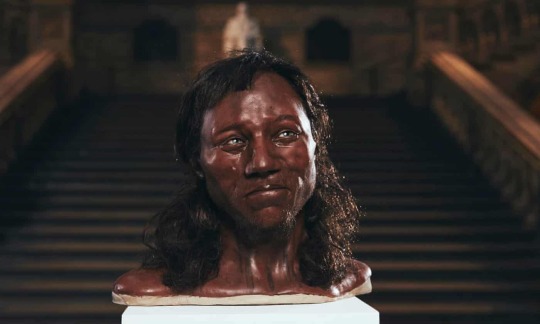
Cheddar Man is a human male fossil found in Gough’s Cave in Cheddar Gorge, Somerset, England. The skeletal remains date to the Mesolithic (ca. 9100 BP) and it appears that he died a violent death. A large crater-like lesion just above the skull’s right orbit suggests that the man may have also been suffering from a bone infection.
Excavated in 1903 in Gough’s Cave in Somerset, Cheddar Man is Britain’s oldest complete human skeleton. The remains are kept by the Natural History Museum in London in the new Human Evolution gallery.[1]
Intense speculation has built up around Cheddar Man’s origins and appearance because he lived shortly after the first settlers crossed from continental Europe to Britain at the end of the last ice age.

It was initially assumed that Cheddar Man had pale skin and fair hair, but his DNA paints a different picture, strongly suggesting he had blue eyes, a very dark brown to black complexion and dark curly hair.
The discovery shows that the genes for lighter skin became widespread in European populations far later than originally thought – and that skin colour was not always a proxy for geographic origin in the way it is often seen to be
Analysis of his nuclear DNA indicates that he was a typical member of the western European population at the time, probably with lactose intolerance, dark skin, blue eyes, and dark curly or wavy hair.[2]
Nuclear DNA sequence data
Nuclear DNA was extracted from the petrous part of the temporal bone by a team from the Natural History Museum in 2018.[3] The genetic markers suggested (based on their associations in modern populations whose phenotypes are known) that he probably had blue eyes, lactose intolerance, dark curly or wavy hair, and, less certainly,[3][4] dark to very dark skin.[2][5] These features are typical of the European population of the time, now known as West European Hunter-Gatherers. This population forms about 10%, on average, of the ancestry of Britons without a recent family history of immigration.[2]
The mitochondrial DNA of Cheddar Man was of haplogroup U5b1.[2] Some 65% of western European Mesolithic hunter-gatherers had haplogroup U5; today it is widely distributed, at lower frequencies, across western Eurasia and northern Africa. In 1996, Bryan Sykes of the University of Oxford first sequenced the mitochondrial DNA from one of Cheddar Man’s molars.[7][8][9]
There was no genetic link with the other skeletons from Gough’s Cave, which are 5,000 years older than Cheddar Man. For much of this intervening period, the last glaciation of Europe had made the area unsuitable for human life.
Genetic change in Britain since the Mesolithic:
Britain was periodically settled and then cleared during ice ages until the end of the last glacial period about 11,700 years ago, since when it has been continuously inhabited.
Until now, though, it hasn’t been clear whether each wave of migrants was seeded from the same population in mainland Europe; the latest results suggest this was not the case.
The team homed in on genes known to be linked to skin colour, hair colour and texture, and eye colour. For skin tone, there are a handful of genetic variants linked to reduced pigmentation, including some that are very widespread in European populations today. However, Cheddar Man had “ancestral” versions of all these genes, strongly suggesting he would have had “dark to black” skin tone, but combined with blue eyes.
8 notes
·
View notes
Text
I found this while trying to track down some information I read a while back about the hazel being a vital plant to the spread of multiple waves of humans across the EurAsian land mass in prehistory. Some of the claims sound over-romanticized to me, and I'm not qualified to judge the archaeology/anthropology/history in any case, but there's enough that I know is true (from other sources) that I can envision putting some of it into practice on my own, small, urban lot, and thereby grow more food and provide more wildlife resources than I thought I could. I'm going to look into some of the other material on this site, too.
6 notes
·
View notes
Text

Where did blue eyes and blonde hair come from?
Blue eyes originated in West Asia 42 000 years ago and was taken into Europe by Middle Eastern paleolithic hunter gatherers who gave rise to the later Mesolithic Western hunter gatherers like Cheddar Man.
Blonde hair originated from the Ancient Northern Eurasians (ANE) 18 000 years ago. They were also West Asian in origin. Light skin originated in West Asia 28 000 years ago. None of these physical traits originated in Europe.
The blonde hair Eastern hunter gatherers who originated from the ANE, migrated into Northern Europe during the Mesolithic. There they encountered the blue, green eyed dark skin Western hunter gatherers and interbred with them.
Map of the genes for light, intermediate, dark skin and light hair, eyes found among ancient remains in Europe and West Asia:

European Western hunter gatherer Cheddar Man with his light eyes:
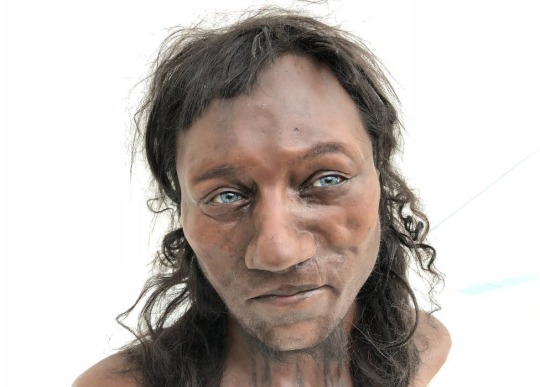
Mesolithic Scandinavian hunter gatherer from Motala Sweden was a mix of Western hunter gatherers and Eastern hunter gatherers. Some carried the genes for blonde hair, light skin and light eyes:
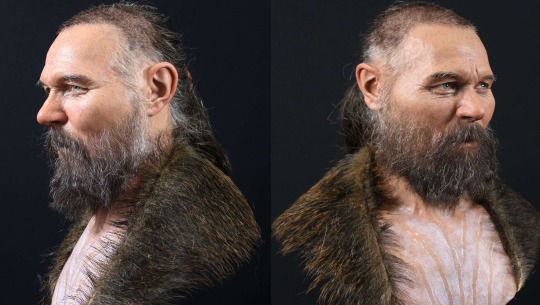
The Neolithic Middle Eastern Farmers from Anatolia also had light skin and took the genes for light skin into Europe. They had dark hair and eyes and resembled modern Southern Europeans who still carry majority DNA from this migration.
The Indo-Europeans who were a mix of Eastern hunter gatherers (and therefore carried the genes for blonde hair)and West Asians migrated throughout Europe, parts of the Middle East, Central and South Asia all the way to China:
Tarim mummies - Wikipedia
Blonde Indo-European mummy from Xinjiang Province, China:


#west asia#western asia#blue eyes#kemetic dreams#europe#europa#euroasia#xinjiang province#china#zhong guo#east asia#chinese#arabs#indo european#neolithic#blond hair#blonde hair#europeans
15 notes
·
View notes
Text
events that fill me with wicked, rotten, depraved glee:
the annihiliation of 'old europeans' at the hands of the yamnaya, who trace their ancestry to the eastern hunter gatherers of the european mesolithic, after the former spent the entire neolithic systematically exterminating the hunter gatherers of western europe
the great slav migration westward into the metropolises of austria, germany and switzerland, so that bosnian now serves as the lingua franca of beč ('vienna'), minhn ('munich') and cirih ('zurich') and russians constitute the third largest migrant community in germany eight centuries after the rape of rujan ('rugen') and the annihilation of the polabian slavs
5 notes
·
View notes
Text
Anyways apparently the Baltics have more hunter-gatherer dna than in the rest of northern europe so if you're from latvia, lithuania and estonia congrats on being part Mesolithic hunter-gatherer.
10 notes
·
View notes
Text
I'm gonna try to summarize my recent research into "Carnonos":
It would seem that, in times of old (Mesolithic), a deer cult emerged in northern Europe/Eurasia
Of course the origins can't ever be fully known but it seems to have originated with sympathetic hunting magic and then evolved into something dealing more with "shamanism"/spiritual mediators
Its hypothesized that people, who depended on the deer for lots of things, would dress in their skins and antlers as a way to
a)hunt then without spooking the deer because they smelled and looked like them and
b)perform sympathetic magic in rituals where deer behavior would be mimicked while wearing deer costume as a way to invoke their presence and make the hunt more fruitful
While performing these rituals/hunting practices, the people became creatures of liminal nature: man and beast, capable of interacting with both and moving through both spaces
This liminal nature allowed for them to became mediators between the world of man and animals and also the world of spirits
So the question is: in depictions of people with antlers or in depictions of beings with deer and human qualities, what exactly is it?
Well yes it could just be the ritual mediator, that is a possibility and certainly probable. However, there's another theory that these depictions show a being that is the parallel spiritual mediator on the "other side", as a helper spirit to the human on this "side"
An ancestor of both humans and deer, the proto spiritual mediator, master of the liminal and all paths everywhere. And it doesn't have to be one thing, it could have been a type of spirit, who knows?
As time goes on, the liminal nature of the deer and deer-mediators becomes more organized and there becomes a distinct association not only with the hunt and the spirit world but also with leading the dead to their dwelling place. Thus this spirit, type of spirit, or ancester deer-mediator becomes a psychopomp and deer become highly associated with spiritual mediators/"shamans"
Time progresses and now it's the Neolithic. The economy has changed, trade has changed, we have changed. We are more removed from nature and develop an in-versus-out, us-versus-them mentality. The deer becomes a trade good proper. We have invented agriculture and with it a cult of the sun and the fertility of the earth. The deer becomes a symbol of the regeneration of natural cycles (think antlers shedding and growing), an emmisary of the now mysterious forces of nature and connected to the sun cult through these other associations
In some places this spirit becomes a deity of pastoral land, liminality, flocks and paths(Proto Undo European, Paxuson). In others, a deity of the hunt and a tutelary guardian(Anatolian, Hittite ect). In others still a deity involved in the ways of all fertility, land and human and animal(Scandanavian, Freyr). In the Celtic culture the child-deity seems to have retained some aspects of dual nature and psychopomp (Gaul, Carnonos)
Whether this spirit is a deified ancestor or a spirit sent from beyond to aid us or a type of spirit is ultimately irrelevant- what matters is that a conception of a being such as this existed and continued to exist in fragmented or evolved form for thousands of years
#anyways yet anothet magnum opus#sources i will give if asked#antlered one#carnonos#cernunnos#deer god#like literally the og deer god
23 notes
·
View notes